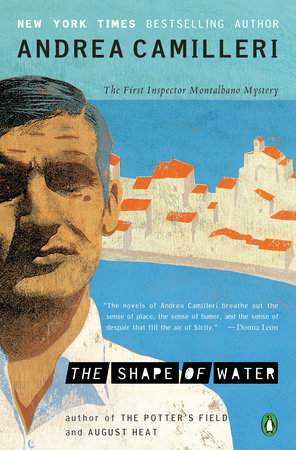READERS GUIDE
Questions and Topics for Discussion
INTRODUCTION
In the seaside town of Vigàta, Sicily, innocence and idealism die even faster than the whores, drifters, and small-time Mafiosi who infest the village with an air of gritty decadence and menace. Those who succeed in Vigàta have learned an astonishing array of tricks, either sexual, political, or both. Those who stumble quickly learn new meanings to the words ferocity and horror.
One citizen who has both risen and fallen is Silvio Luparello, a.k.a. the Engineer. After nearly twenty years of low-profile political maneuvering, Luparello has finally gained control of the local arm of his political party and has secured his long-hoped-for appointment as provincial secretary. Only three days after his appointment, however, a pair of trash collectors find Luparello dead in his BMW in a kind of open-air brothel on the outskirts of town, his head thrown back and his trousers lowered. As the local television news sanitizes the incident and the crime lab scrambles for answers, Police Inspector Salvo Montalbano tries to assemble a puzzle whose pieces refuse to fit. Why is Pietro Rizzo, the dead man’s closest political ally, so undisturbed by Luparello’s death? What is the significance of a valuable necklace discovered near the car? And what does any of this have to do with a transvestite named Marilyn?
Fast-paced, sharp-edged, and laced with hard-boiled humor, The Shape of Water marks the debut of Inspector Montalbano, a wily gourmand whose inquiries only begin with the facts of the case. In between elaborately prepared meals, Montalbano also ponders the ethics of his profession and the uncertain nature of truth in a world largely given over to concealment and deception.
ABOUT ANDREA CAMILLERIAndrea Camilleri’s Montalbano mystery series, bestsellers in Italy and Germany, has been adapted for Italian television and translated into German, French, Spanish, Portuguese, Greek, Japanese, Dutch, and Swedish. He lives in Rome.
DISCUSSION QUESTIONS FOR THE SHAPE OF WATEREven before the grisly discovery that triggers Montalbano’s investigation, Camilleri presents a multitude of details that establish the character of the town of Vigàta and the general mood of the novel. Which details do you find most effective, and why?
We first see Inspector Montalbano as he awakens from a vivid erotic dream. Given the brutal everyday realities that Montalbano confronts on the job, what is the significance of the fact that we first glimpse him as a fantasist and a dreamer?
Like many fictional detectives, Montalbano works with informants who are active criminals. One of these, Gegè Gullotta, is a pimp who manages underage girls, some not yet in their teens. Making matters still more complex is the fact that Montalbano and Gullotta have been buddies since they were boys, and they still regard each other as friends. In using Gullotta as an informant and failing to arrest him, is Montalbano only doing what is necessary to do his job, is he giving a friend a break, or is he making himself an accomplice to crime?
Early in The Shape of Water, Montalbano states with pride that he is an honest man. By the end of the novel, he isn’t so sure. The metaphor in the novel’s title is also a commentary on the nature of truth: just as water assumes the shape of its container, so, too, can facts be made to fit almost any theory, provided the theorist is clever enough. In what other ways does The Shape of Water comment on the nature of truth and honesty?
A continual counterpoint to Montalbano’s investigation is its coverage by the news media. How do news reports reveal and relate to the political culture of the province, and do they subserve the hypocrisy of that culture?
The novels of Andrea Camilleri have been compared to the hard-boiled detective stories of Raymond Chandler. If you have read some of Chandler’s work, what similarities or differences do you observe? You might consider such points of comparison as the two authors’ use of humor, their concept of gender roles, and their attitudes toward violence.
Some of the sharpest insights in the novel come, not from Montalbano, but from Secretary Luparello’s widow. Ingrid Sjostrom also proves to be an unexpectedly strong character. What characteristics in women does Camilleri depict as admirable?
Late in the novel, Montalbano’s lover, Livia, says that he has promoted himself from inspector to a fourth-rate god. What precisely does she mean? Throughout the novel, has Montalbano performed his professional duties, or has his conduct been somehow self-aggrandizing?

